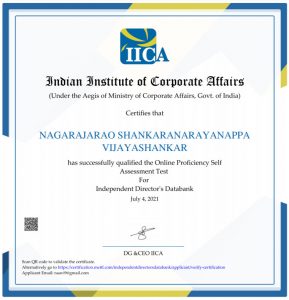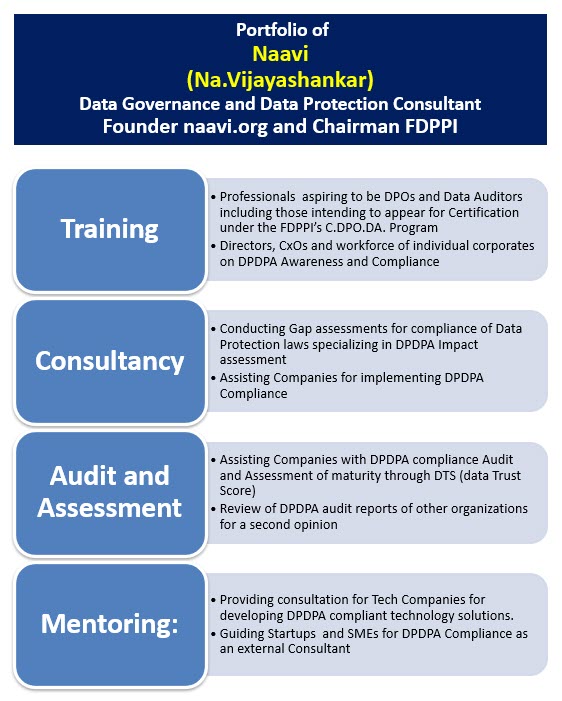The recent Cyber fraud in Mumbai where an elderly (72 year old) woman was duped to the extent of Rs 42 lakhs in a Nigerian Scam (Refer here) open up a discussion on how it that seemingly intelligent people fall for this old trick of fraudsters. We often dismiss such frauds as a result of “Greed” where the victim wanted to get rich overnight and fell to a trap. It is true that some of the Nigerian frauds are induced by the greed of the victim. But there could be other reasons as well for which some people seem to get carried away by the various promises made by their online friend and behave as if they are “hypnotized”.
It is not only this case where there is no reason for a 72 year old lady with Rs 42 lakhs in her Bank account should feel greedy and lose her life time savings. There have been similar cases where elderly persons and young kids have fallen for the sweet talk of fraudsters on the facebook or chat apps.
In all these cases, if we look beyond the motive of greed, it appears that the victim was led to behave in a particular manner which appears irrational for many of us exactly in a manner a “hypnotized” person behaves with a post hypnotic suggestion.
We need to analyse these cases scientifically to understand if there exists a phenomenon of “Cyber Hypnotism” where a person can induce hypnosis through written words, implant suggestions and make the subject behave differently under post hypnotic state.
Hypnosis itself is a very interesting phenomenon and this age old art perhaps is still not fully understood though there could be several theories to explain the phenomenon.
One easy to understand explanation of hypnotism is that the human brain consists of a conscious part which we interact with the surroundings on a day to day basis but beneath this conscious part seems to exist a “Sub Conscious mind” which can come to the fore during a hypnotized state of mind.
This sub-conscious mind is a store house of every one of our experiences though it is not available for recall by our sensory organs and conscious memory. In a way it is like our computer where files are stored in a “hidden” storage space and are not accessible by our operating systems and hence are invisible. But if we can use a suitable software to “undelete a deleted file” or “discover the hidden files”, we may suddenly realize that there are many files which we ourselves have created and saved may be as earlier versions of currently used files and later on over written with other versions.
In the case of human mind, the storage space available is very large compared to what we normally use and hence the “Sub Conscious Memory” holds a very large volume of data that has a “Photographic memory recording” of every one of our past experiences through our sensory organs.
A hypnotist finds a way to put the conscious mind to sleep and awaken the subconscious mind to make the subject remember long forgotten experiences. A therapist uses this to discover reasons for unexplained attitudes and behavioural pattern of individuals and through hypnotic suggestions during the state of hypnosis alter the attitude and behaviour in the post hypnotic state even though the subject is no longer in a “trance”.
It is however a part of theory that the post hypnotic suggestions may be resisted by the subject if it goes against fundamental beliefs of the person and hence cannot be used to make the person do “Criminal Acts”. According to this theory, there are some basic beliefs which a person has got embedded in his mind which cannot be wished away even under the hypnotic state by the hypnotist. But if the hypnotist is clever and makes a person believe that a post hypnotic state is not actually against the basic tenets but in support of it, then the post hypntic state may work. This explains the growth of ISIS type of terrorism in the world and also some of the schizophrenic personalities built through self suggestions.
The post hypnotic suggestions which are harmful are like “Trojans” implanted in the minds of persons which lie low under normal circumstances but make the person behave differently when certain circumstances converge.
This is a state of mind that is created in some persons who exhibit the propensity to fall to the “Social Engineering” of online fraudsters. As a society, we need to fight against not only such fraudsters but also the susceptible potential victims. It is like preventing the “Addiction” to undesirable habits.
Normally, the hypnotist induces a hypnotic state of mind in a willing subject by making him relax and then speaking to him in a relaxed state of mind, through spoken words the subject is made to slip gradually from a conscious state to a sub conscious state. In some cases it is as simple as telling the subject that “You are now completely relaxed….your eyes are feeling heavy…when I count 5 you will go into deep sleep…etc”. For many this appears like magic particularly when some suggestions are also implanted during this “Inducement stage” as to the subject partially waking up and working under a trance and also waking up completely to come out of the trance. For example when the subject opens his eyes and is still in a trance, a mere statement of “Sleep” may quickly take him back to hypnotic state while a suggestion that after a count down from 5, he will be wide awake brings him out of trance.
What we understand from this phenomenon is that there is a way to take a person from his conscious state to a subconscious state by talking through intelligently. There is no reason to think that this can only be done through spoken words, or through dangling a pendulum or darkening the surroundings etc. These are all methods to ensure that there are no distractions and similar effect is automatically present in the case of most lonely individuals working in the social media I donot rule out the use of psychedelic images to induce hypnotic state of mind in some cases. Perhaps “Voice Messages” and “Video Messages” can also be used to induce Cyber hypnotism in the same way that hypnotists do in the physical world.
If a person is staring into the Computer monitor and is chatting for a period of time, he is so involved in the conversation that he could slip into a state of pre-hypnotic inducement. If the other person is considered trustworthy and he starts making some suggestions, the subject may start getting into a trance like state of mind letting himself to be “Cyber Hypnotized”. Some games including the “Secondlife.com” kind of situations may take the visitor into a fantasy world where there could be interactions with malicious characters who can “brainwash” the victims into a hypnotic state. The rest follows as per the normal principle of hypnosis where the subject trusts the hypnotizer and executes his commands in the post hypnotic state later. This in the case of the Nigerian frauds could be going into the Bank and sending out payments or even sharing the Banking credentials online.
Now, how do we prevent our lonely elders and young kids from being so Cyber hypnotized?
The first step is to create a “Self Awareness” in an individual that he is susceptible to “hypnosis” through “Cyber talk”. When a person receives an SMS message ..”Are you feeling lonely? … Can we chat?, the lonely elder male or female should realize this is not a “Friendly therapist” talking to him but a potential fraudster. The best thing is not to test out of curiocity and avoid responding to such messages .
People should think of binding themselves with the “Ulysses Contracts” (Research on finding out what is Ulysses contract and how to use it to avoid irrational and impulsive decisions). The technique has been successfully used in the Finance world as well as Medical world to avoid irrational decisions by subjects. This works well for adults… in the present case the elderly people who feel lonely, who feel aggrieved that they have been neglected by the society and seek alternate remedies on the social media to find company. This is nothing different from being addicted to smoking, drinking or drugs though it is fashionable to say that I am old but I have active facebook profile with many many friends and likes.
We often think Kids are difficult to handle the same way like adults. But the same techniques that work on the adults may also work on those kids who are likely to fall prey to the online inducement of pedophiles or fraudsters since most of the time they also suffer from the psychological state of personal neglect and isolation from busy parents and feel that they are no longer kids and “Know all”. In this state of mind they behave with the confidence that they are adults mentally though they may not be so physically.
Hence, an awareness campaign on”Don’t get Cyber hypnotized” amongst the school kids can be the first step in combating this addiction.
Second precaution that people should adopt is to break away from the computer or mobile screen from time to time to ensure that they are not in a trance. This could be also good for the eyes of the Computer user.
Can this be done with an App that is an add on to social media that “Pops out” at periodical intervals to interrupt a computer user on Facebook or Twitter or other social media to talk to the user and wake him up from a half hypnotic state if he has slipped himself into?.
Yes, this could be annoying for serious Computer users but I am suggesting this only when a person is on social media.
In fact advertisers may grin and be happy with my suggestion that their annoying pop up full screen ads also have a positive purpose!
Probably the Fitness Bands of tomorrow should be programmed to throw up such ads just the way some Car manufacturers are thinking of waking up persons who tend to sleep while driving.
Beyond these three measures of….
“Creating Awareness on Cyber hypnotism”,
“Motivating people to adopt Ulysses Contracts to avoid irrational cyber induced decisions” and
“Forced breaks with pop up ads with relevant reminder messages”,
the need to make these vulnerable sections of the society feel that they are not alone and are wanted by their family members and friends in the real society is also essential.
This is the toughest part in our society since every youngster feels that he is too busy with his work and hence has no time for socialization with his elders or kids at home.
Hopefully we start thinking in this direction and each one of us may find our own solution that helps to combat malicious use of “Cyber Hypnotism”.
Naavi
[P.S: Author has been an interested student of hypnotism since 1971 and also holds a basic level certificate in hypnotism…. just for knowledge enhancement and not for practice.]







